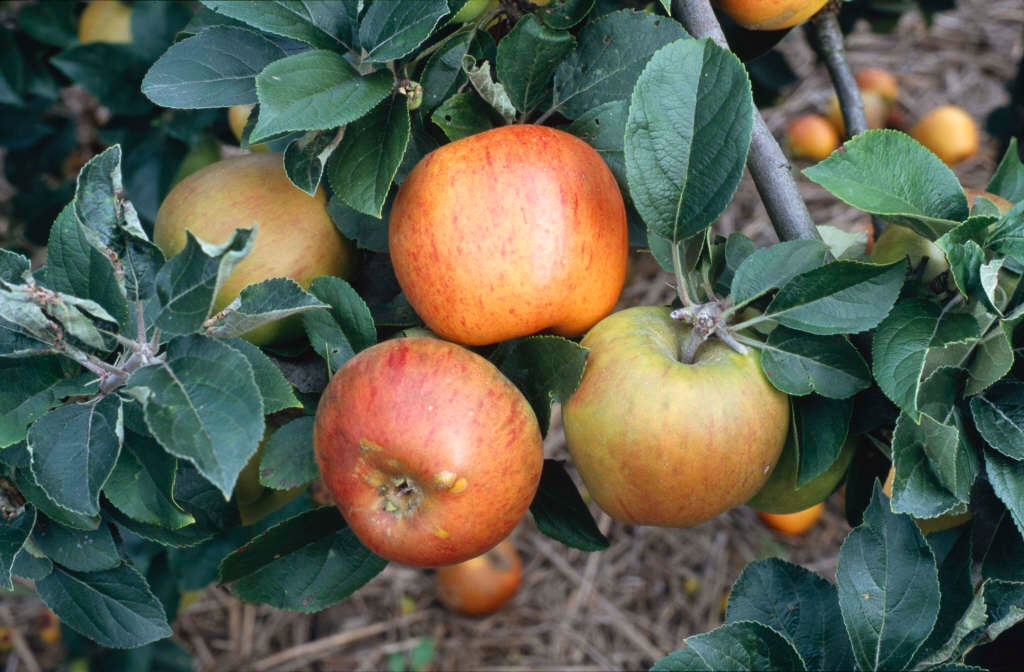Malus domestica 'King of the Pippins' (D)

apple 'King of the Pippins'
A dessert cultivar in pollination group 5. It is suitable for northerly, colder, higher rainfall areas, where it will grow with an upright habit and produce heavy, regular crops. Fruit are of medium size and are orange and red flushed over yellow. If well ripened they have a good flavour and when cooked, keep their shape and are flavoursome. Fruit keeps well and so the season of use runs from October through to December or longer
Synonyms
Malus domestica 'Reine des Reinettes'Malus domestica 'Pike's Pearmain'
see moreMalus domestica Reine des Reinettes

Buy this plant
Size
Ultimate height
4–8 metresTime to ultimate height
5–10 yearsUltimate spread
4–8 metresGrowing conditions
Moisture
Moist but well–drained, Well–drainedpH
NeutralColour & scent
| Stem | Flower | Foliage | Fruit | |
| Spring | Pink | Green | ||
|---|---|---|---|---|
| Summer | Green | |||
| Autumn | Green | Orange Red Yellow | ||
| Winter |
Position
- Full sun
Aspect
West–facing or South–facing
Exposure
Sheltered Hardiness
H6Botanical details
- Family
- Rosaceae
- Native to GB / Ireland
- No
- Foliage
- Deciduous
- Habit
- Bushy
- Genus
Malus are small to medium-sized deciduous trees with showy flowers in spring and ornamental or edible fruit in autumn; some have good autumn foliage colour
- Name status
Accepted
How to grow
Cultivation
It will crop best in a sunny situation. The height will depend on the rootstock and training method. Suitable for all training forms. Keep a clear area around the trunk of at least 60cm radius. Fruit thinning may be required. For more details see apple cultivation
Propagation
Propagate by chip budding or grafting onto a clonal rootstock for fruit. The rootstock used will largely determine the vigour of the tree
Suggested planting locations and garden types
- Cottage and informal garden
- Wildlife gardens
- Edible fruit
- Wall side borders
Pruning
Regular pruning is required - see apple pruning; spur bearing
Pests
May be susceptible to aphids, including woolly aphid and rosy apple aphid, fruit tree red spider mite, codling moth and other caterpillars
Diseases
May be susceptible to apple canker, apple scab, blossom wilt, brown rot, fireblight, honey fungus and powdery mildews
Love gardening
Sign up to receive regular gardening tips, inspiration, offers and more
View our Privacy Policy
Get involved
The Royal Horticultural Society is the UK’s leading gardening charity. We aim to enrich everyone’s life through plants, and make the UK a greener and more beautiful place.